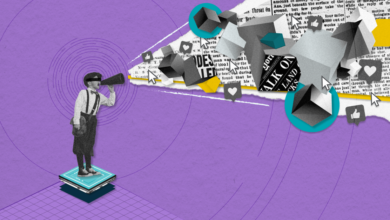Benefits, Concerns, and Ethical Use

The integration of generative AI in K-12 public education has the potential to revolutionize the learning landscape. AI technologies offer a wide range of benefits, enabling educators to personalize instruction, enhance student engagement, streamline administrative tasks, and facilitate effective decision-making processes.
Personalized Learning Experiences
Personalized learning fosters a deeper understanding of content and nurtures self-directed learning. AI can analyze individual student strengths and weaknesses, and individual learning styles and provide real-time feedback.
Generative AI can create customized learning materials, including text, videos, and interactive exercises, customized to suit each student’s learning style and level of understanding. This content can be adapted based on student progress and personalized feedback, ensuring they receive appropriately challenging and engaging materials. Generative AI can analyze a student’s learning history and performance data to recommend personalized learning pathways, suggesting the most suitable sequence of topics and activities for each student by analyzing individual learning patterns and preferences. AI can recommend personalized resources, reading materials, and supplementary content to students. For students with special needs, generative AI can create personalized learning resources that cater to their specific requirements, enabling a more inclusive and supportive educational environment.
With the help of generative AI, students can learn at their own pace, allowing them to revisit concepts or progress faster as needed. This flexibility ensures that no student is left behind or held back based on the standard pace of the classroom. AI algorithms can identify learning gaps and misconceptions in a student’s understanding by analyzing their responses and performance data. Educators can then provide targeted interventions to address these gaps and support students’ academic growth.
AI-Powered Assessments
Differentiated assessments allow educators to empower students to own the assessment process. A variety of assessments can be used to measure student learning using AI with more efficiency, accuracy, and effectiveness than traditional assessments.
Adaptive testing can efficiently identify areas of strength and weakness, and provide a more accurate measure of a student’s abilities. Adaptive Testing using AI algorithms can measure student proficiency and performance by creating appropriate questions for the students. Educators can modify questions to challenge students.
Intelligent tutoring systems use AI to track student progress and adjust the difficulty level of tasks to match their abilities. AI tutoring gives educators the ability to individualize learning for students. Educators can measure and identify student strengths and weaknesses based on data analyzed with AI. Educators can recommend personalized learning pathways and provide resources or interventions to support student learning. AI-powered virtual tutors can act as personalized guides, addressing students’ questions, providing explanations, and offering support whenever needed. These tutors can adapt their teaching styles to match the student’s learning pace and preferences.
Data-Driven Decision Making
AI’s data analysis capabilities can potentially transform the way education institutions make informed decisions. By processing vast amounts of student data, AI can identify patterns and trends, helping teachers and school leaders identify areas of improvement and design targeted interventions. School administrators can also utilize AI to optimize resource allocation, forecast enrollment trends, and make data-backed policy decisions, leading to more efficient and effective educational practices.
Enhanced Educator Efficiency
AI has the potential to streamline routine administrative duties for teachers, such as grading, attendance and lesson planning, allowing them to allocate more time and attention to individual student needs. This efficiency, in turn, fosters stronger teacher-student relationships and enables educators to implement more creative and innovative teaching strategies. Using AI automated feedback, and grading to track student progress, provide feedback and automate the grading process for students saves time for educators.
Professional Development
It is vital for districts to support teachers with professional learning around AI and vet AI resources for their appropriateness. Build an understanding that this is an “information literacy” journey, and AI is a source for finding information to complete a task or product. Help teachers understand that the quality of the output is dependent on the prompt and human input to teach staff and students alike the value of prompt engineering.
As AI technologies evolve, teachers need ongoing professional development to effectively integrate AI tools into their pedagogical practices. Training programs can help teachers understand AI capabilities, address potential biases, and enhance their ability to leverage AI in ways that align with ethical and educational standards.
Concerns Regarding the Use of AI in Education
Concerns related to the use of AI in education include academic integrity, educational outcomes, responsibility and adaptability, and access and equity. As advances in artificial intelligence grow, educational organizations must strike a balance between leveraging AI’s capabilities and preserving human interaction in the classrooms. We suggest that this balance can be achieved by ensuring that AI is used as an accompaniment to human thought and creativity, rather than as a substitute.
Academic Dishonesty
Developing a strong culture of academic integrity within educational institutions is crucial. This includes cultivating ethical values, fostering discussions, and emphasizing the importance of originality, critical thinking, and research skills. AI-driven algorithms have become increasingly sophisticated, enabling students to easily generate essays, reports, or other assignments by simply inputting a few keywords or instructions. The elephant in the room that is dividing educators is whether or not using AI is plagiarism or just cheating.
As AI systems, like GPT-3, become increasingly sophisticated in generating human-like text, concerns have arisen over the potential for these models to replicate existing content without proper attribution. Instances of AI-generated articles, essays, and even creative works bearing striking resemblances to pre-existing materials have been reported, leading to accusations of plagiarism against AI developers and users alike. The line between genuine creativity and automated reproduction blurs as AI generates content based on vast datasets, making it challenging to distinguish originality from imitation.
By definition, plagiarism involves taking credit for another human being’s original work. Since copying the results from an AI program is not copying another human’s work, it is not technically plagiarism. While arguments have been made to support both sides of the plagiarism argument, universities and companies like Turnitin agree that at the very least the use of generative AI without transparency or citation is academically dishonest. Turnitin takes it a step further to say that the use of AI for academic writing is akin to “contract cheating” (enlisting an essay mill to produce a paper). Still, this type of academic dishonesty is not an acceptable practice.
Then there’s the age-old issue of “cheating.” What compels students to cheat? Dr. Clark affirms that cheating happens when students “will be graded on something they may not do well.” AI should force us to rethink why and how we teach what we teach. What is the purpose of what we teach? For example, why do we teach writing the same today as it was taught 30 years ago?
Do kids really need to know how to write that way? Probably not. We can’t continue to do things the way we’ve always done them, and AI just may force us to confront the-way-we’ve-always-done-it syndrome.
Combating the copy-and-paste use of AI-assisted results requires a multi-faceted approach that involves training, technological solutions, and institutional support. Educational institutions need to have a clear definition of plagiarism and academic dishonesty as well as develop specific rules about students using AI tools in order for them to be able to appropriately use the tools. These guidelines should be consistently communicated to students to encourage ethical use of AI technologies.
Institutions of higher learning have already begun to address the AI issue. Some require instructor approval for students to use generative AI tools, others require transparency and appropriate citations on the part of students and still others consider any use of these tools plagiarism. The University of California Los Angeles Center for the Advancement of Teaching has provided guidance for instructors on the use of generative AI and has addressed academic integrity in their Student Code of Conduct. Similarly, Baylor University has provided strategies for instructors who require essays. K-12 schools districts can reference universities to inform their AI strategies.
Minimizing AI Risks
There are tools that are designed to detect or measure the amount of AI-generated content such as OpenAI’s “AI Text Classifier,” “ZeroGPT,” and “AI Content Detector.” These tools use algorithms to identify patterns, similarities, and inconsistencies in students’ work and detect any potential instances of text copied directly from an AI program. It is important to note that while these tools hold promise, they are not yet reliable.
Teachers can use a variety of strategies to reduce the likelihood of students depending exclusively on AI. For example, assignments that require critical thinking, personal analysis, or group collaboration make it more difficult for students to rely solely on AI-generated work. Mixing individual and group assignments can make it harder for students to rely solely on
AI-generated content. Implementing personalized assessments that are based on a student’s unique learning journey, experiences, or perspectives that require them to provide original thought can make it difficult for students to copy and paste from an AI program. Presentation projects can help assess a student’s understanding and knowledge beyond what AI tools can generate.



